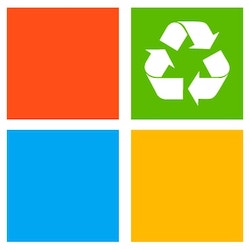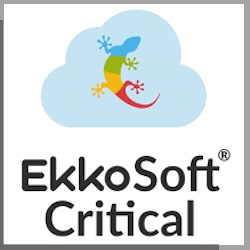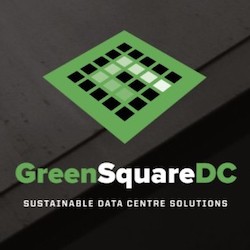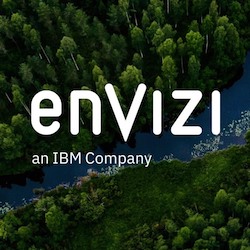In my experience working with public sector leaders, an often-overlooked source of emissions come from IT. The global IT industry is responsible for approximately 3% of total CO2 emissions, and if left unchecked, this could grow to as much as 10%. Fortunately, more and more organizations, public and private, are taking the necessary steps to reduce their carbon footprints:
- Reducing the energy needs of an IT system and making sure that only sustainable energy sources are being used
- Using IT and data technologies to help drive down an organization’s total CO2 emissions, for potential results of as much as 20%.
Let’s start with some simple tools that public sector leaders can use to control their IT systems’ carbon footprints, and then I’ll turn to some larger sustainability strategies made possible by new technologies.
Sustainable IT is observable IT
The first step to managing your IT CO2 footprint is understanding how your IT system works, and where it draws energy. This can be done with a tool like an application portfolio manager, by conducting a carbon audit or by using a carbon calculator . For public sector leaders interested in going a step further, you can’t do better than a digital twin. A digital twin is a virtual replica of a system (in this case, an IT system), which provides a team with an x-ray view into how it functions. Digital twins make it possible to experiment with changes virtually, before implementing them in real life, and they’re an outstanding tool for general understanding. Governments are often saddled with legacy technologies, which require inordinately high costs in the form of energy and maintenance. Optimizing public sector IT systems should be step one for any department that can spare the up-front investment. The benefits are immediate and lasting.
Now, what happens if you turn those same optimization tools on your overall carbon footprint? In my work with the public sector and private sector, I’m often struck by two things: how little people know about their organization’s energy usage, and how easy some of the gains can be.
Once an organization’s energy usage is observable, the doors are open to optimization. Among the specific tools that can lower an organization’s carbon footprint are:
- Going digital
- Moving to the cloud
- IoT
Let’s look at each in turn.
Cutting carbon by going digital
While digitization can be a valuable tool in the pursuit of sustainability, it’s important to approach it with a nuanced understanding of the potential risks and benefits. On one hand, digital systems reduce the need for paper-based processes and streamline operations, leading to a more efficient use of resources and reduced labor. They can also enable governments to collect and analyze data, providing better visibility into their sustainability efforts.
However, there are also potential downsides to digitization. For example, gathering and processing more data requires energy, which can contribute to carbon emissions. Additionally, the proliferation of digital devices can lead to a rise in e-waste if not managed responsibly. One report by the Capgemini Research Institute found that less than half of executives are aware of their companies’ IT carbon footprints, or of the steps they might take to reduce it.
The key is planning. Digitization is a valuable tool for governments committed to sustainability, when combined with a holistic understanding of its energy usage, and when management take steps to mitigate any negative effects. With the right strategy in place, digitization becomes a powerful enabler of decarbonization and resource efficiency.
Cutting carbon by migrating to the cloud
Another way that IT can help reduce CO2 emissions is through the implementation of cloud computing. By moving data and applications to the cloud, private and public sector organizations can dramatically reduce their energy consumption and carbon footprints.
One example of a government saving energy by migrating to the cloud is the U.S. Government’s Cloud Smart initiative, which encourages federal agencies to move their IT systems to the cloud. As a result, agencies can reduce the number of physical servers they need to maintain, which in turn lowers energy consumption and greenhouse gas emissions.
Cutting carbon through IoT
By connecting devices and systems, the Internet of Things (IoT) also helps organizations optimize their operations and reduce energy consumption. For instance, a smart building can automatically adjust lighting and temperature based on occupancy levels, resulting in significant energy savings.
However, reducing CO2 emissions is not the only benefit that IT can offer. It can also open new opportunities and help address wider sustainability challenges. For example, using IT to improve supply chain management can help organizations reduce their environmental impact by reducing the amount of waste and increasing the efficiency of their operations.
Maintaining focus in difficult times
In the public sector today, new events constantly vie for attention. Inflation, the war in Ukraine, chemical train derailments and other challenges must not distract public sector organizations from addressing the global warming challenge. IT has an important role to play in reducing CO2 emissions and helping to create a more sustainable future. By understanding our current CO2 footprint, establishing proper governance, selecting and scaling the right use cases, and using real-world examples, we can make a meaningful impact. Let’s take action and do our part to protect our planet.
Read more about real-life use cases for carbon-cutting IT in TechnoVision for Public Sector, our yearly look at leading technological applications in the public sector space. For more information on contact me at gunnar.menzel@capgemini.com.
Guest Author: Gunnar Menzel is chief technology and innovation officer, global public sector, Capgemini. Read more Capgemini blogs focused on sustainability here. More: Read all guest blogs here.




